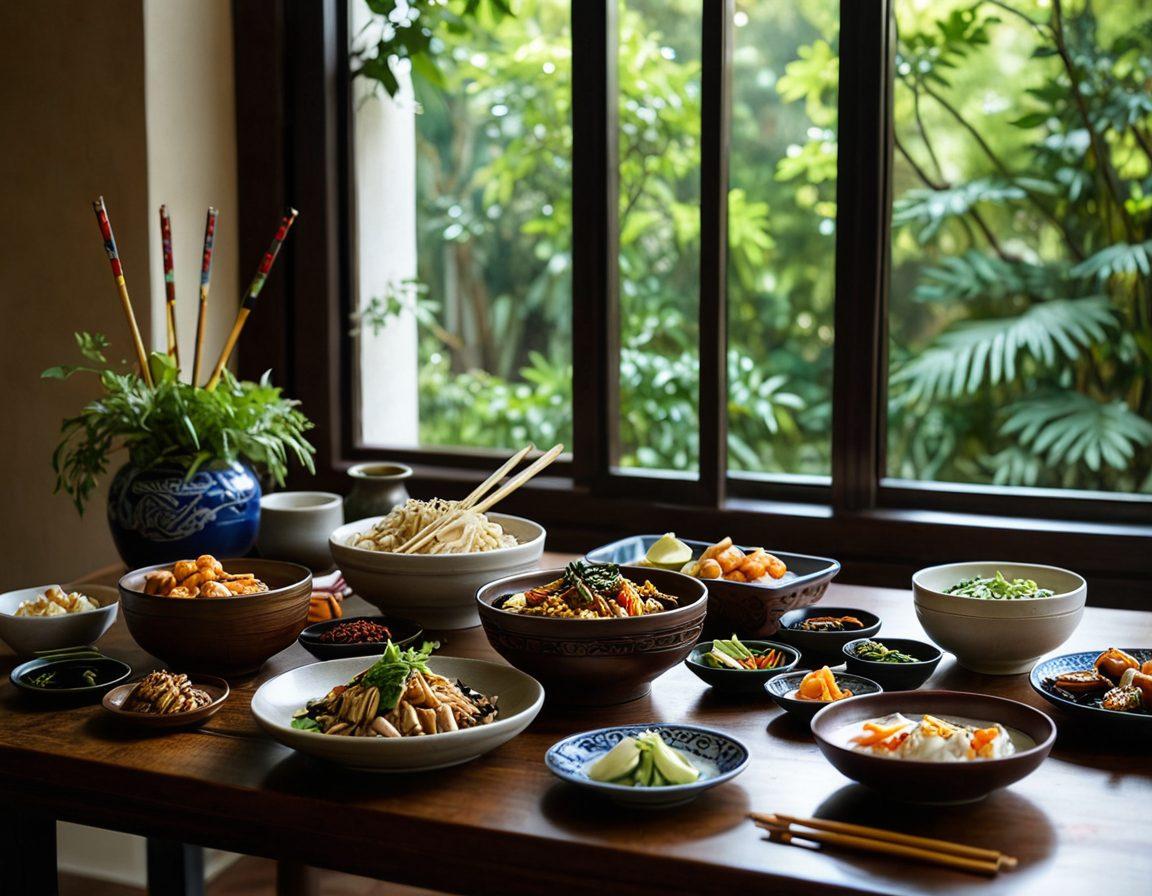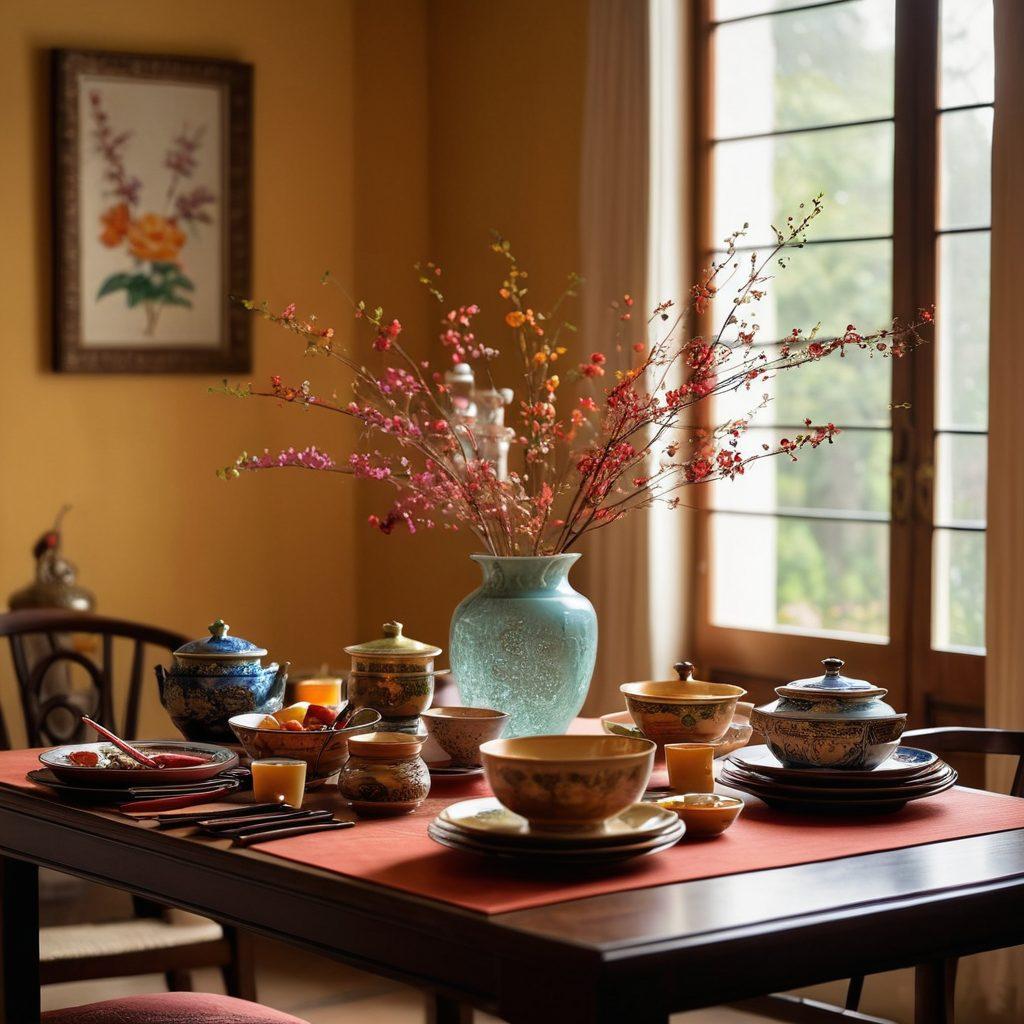Finding Joy in Every Bite: Embracing Chopstick Culture and Culinary Art
Have you ever sat down at a restaurant and felt a little sad because you just couldn’t grasp the art of eating with chopsticks? You’re not alone! Many food lovers worldwide find themselves in this predicament when presented with a delicious dish, particularly when faced with tantalizing Asian cuisine. But what if I told you that mastering chopstick techniques opens the door to an exhilarating food experience? The joy of navigation through each bite—be it sushi, noodles, or dim sum—can transform your dining experience into an immersive cultural journey.
Learning to use chopsticks is not just about acquiring new utensils for your meal; it's a gateway into a rich chopstick culture that embodies culinary art! Imagine slipping your fingers into a challenging pair of chopsticks to pick up a delicate piece of sushi; it can feel like a rite of passage for one’s culinary adventure. Each moment spent practicing these techniques is laden with cultural significance, forging connections with the traditions of gastronomy that come with every plate of exotic food.
As you embark on this journey, consider the flavor and taste you’ll unlock by mastering chopstick techniques. It’s often said that food is a universal language, but the finesse of chopsticks adds a layer of sophistication, enriching your culinary art experience. Remember the first time you perfectly lifted a piece of dim sum with ease? That moment was not just about eating; it embodied the spirit of cultural dining while exploring the artful presentation of food. Can you remember how it felt to savor that triumph?
Eating etiquette plays a pivotal role in dining experiences around the globe. In many cultures, how you handle your utensils speaks volumes about respect and appreciation for the meal set before you. With each meal preparation, not only do you enhance your skills in chopstick techniques, but you also participate in a timeless ritual that goes beyond tasting. Are you ready to fully immerse yourself in this practice and elevate your dining experience?
Enhancing your chopstick game can be incredibly rewarding, and practicing these techniques can be both fun and engaging. Start by incorporating chopsticks into your everyday meals, regardless of the cuisine. Whether you are trying your hand at a gourmet restaurant or inviting friends over for a cozy night of cooking Asian cuisine at home, those chopsticks can turn a casual meal into a cultural masterpiece. With every bite, remember: it's not just about the meal; it's about the experience of sharing flavors and creating memories through the joy of eating.
From Sad to Glad: Transform Your Dining Experience with Asian Utensils
Imagine stepping into a world where every meal becomes a celebration, where even the most familiar dishes take on a new life, and where the simple act of eating transforms into an art form. Welcome to the realm of chopstick culture—an immersive dining experience that transcends the ordinary. When we think of dining, many of us picture forks and knives, but what if the key to elevating our food experience lies in the delicate grasp of chopsticks? Asian utensils beckon us to engage with our meals in a way that is both joyful and meaningful, moving us from a place of culinary sadness to one of pure delight!
There’s something enchanting about wielding chopsticks that can make even a bowl of noodles feel gourmet. For those hesitant to embrace these polished wooden tools, think of chopsticks as an invitation to a whimsical food journey. Have you ever pondered how the act of picking up sushi or dim sum with chopsticks connects us deeper to our food? One might say, "The chopsticks are not just utensils; they are gateways to experiencing the flavors, textures, and stories behind each dish."
Mastering chopstick techniques can seem daunting at first, but that’s part of the beauty in the journey. Just like cooking itself, it’s all about practice and patience. Start by selecting your favorite Asian cuisine—whether it’s a sizzling plate of stir-fried veggies or a delicate serving of sushi. With each bite you gather skill and confidence, turning your eating etiquette into an engaging ritual. As you taper your meals with these traditional utensils, your focus shifts to not just the taste, but the entire food presentation. Imagine sharing a table with friends, the joy of exchanging chopsticks across plates, creating memories intertwined with each shared meal.
The beauty of using chopsticks extends beyond just how we handle food; it enhances our culinary art appreciation. Each motion speaks volumes, reminding us that food is not merely for sustenance but an artistic expression of culture and flavor. Are you ready to say goodbye to mundane dining experiences? Embrace the charm of exotic food made for chopsticks—like slippery ramen or intricate dim sum. As you learn to navigate your plate, you discover a new way to pair flavors while engaging your senses, igniting a love for cultural dining that will linger long after the last bite.
So, how do we transform our dining experience with chopsticks? Begin by incorporating these wonderful Asian utensils into your cooking tools or hosting dinner parties. Invite your friends over for an evening of cooking, tasting, and trying out your newfound chopstick skills. Share memorable moments that redefine your relationship with food and immerse yourselves in the rich tapestry of gastronomy. You will find that as you master the art of chopsticks, the sadness associated with clumsy eating gives way to laughter, connection, and joy. Let each meal be a celebration of culinary exploration—one chopstick at a time!
A Culinary Journey: Discovering the Art of Eating and Flavor Through Chopsticks
Imagine walking into a vibrant restaurant filled with the aromatic scents of Asian cuisine, vibrant colors of simmering dishes, and the sound of chopsticks clinking on bowls. It's a sensory feast that draws you in, almost magnetically. But is it just food that captivates us, or is there an unspoken language in how we eat? Welcome to a culinary journey where we’ll explore the intricate art of dining through chopsticks, and how mastering this unique skill transforms not just your meal, but your entire food experience. Are you ready to elevate your dining game and embrace chopstick culture?
As we delve deeper into the world of chopsticks, we uncover the rich tapestry of culinary art that surrounds these simple yet elegant utensils. Unlike traditional forks and knives, chopsticks offer a different approach to savoring food. Using chopsticks requires a certain finesse and appreciation for each bite, leading us to slow down and truly immerse ourselves in the experience. Have you ever felt a sense of sadness while hurrying through a meal? By embracing chopstick etiquette, we can turn our dining routines into holistic experiences that celebrate flavor, taste, and even the artistry of food presentation.
Think about that moment when you expertly maneuver a plate of sushi with your chopsticks, or relish the delicate strands of noodles without losing a single piece. Each meal becomes a personal adventure in using chopstick techniques to navigate through gourmet dishes like dim sum or exotic food surprises. It’s not merely about eating; it’s about mastering the act. It allows us to appreciate everything from the textural contrasts of a beautifully prepared dish to the nuances of food pairing. Have you ever considered how the method of eating can change the way you perceive flavor? What if each bite holds a story waiting to unfold?
At the heart of this culinary journey lies the art of meal preparation and cooking. With chopsticks in hand, you become part of a cultural dining experience rich in history and tradition. Each country boasts its own unique chopstick culture, such as the difference between Korean chopsticks and their Chinese or Japanese counterparts. Imagine sharing a meal with friends and family while engaging in meaningful conversations about the diverse gastronomy of Asia. What’s even more thrilling is the idea that each meal becomes an opportunity to connect with others through the art of cooking and dining together.


